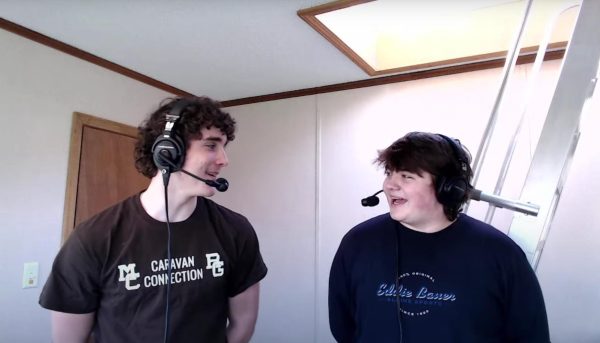Exploring the deepest of the ocean deep
photo via Wikimedia Commons under Creative Commons license
There are a lot of things that are presented around the world. For example, those may contain the knowledge of how the seasons change, how certain animals are different from one another, or why humans can’t breathe in space. Those are all basic things that humans know and think about daily.
One feature, that is different from all is the unexplored parts of the ocean. It has always been difficult to find out what exactly is in the ocean the deeper humans go. There is a different level of the oceans that contain trenches, also referred to as the oceanic trenches. Some of the trenches are called Tonga Trench, Challenger Deep, and Galathea Depth, which reaches 34,580 feet.
Tonga Trench is located in the southwestern part of the Pacific Ocean. The deepest point the trench reaches is 10,882 meters. The trench just tops the meter point above Galathea Depth. The Mariana Trench is the deepest trench of the ocean on Earth. Challenger Deep is 11,034 meters as well as it being 36,201 ft. deep. The air pressure underwater for a human being is already hard enough even going past 20 ft. However, in 1960, the impossible and unimaginable happened. U.S Navy Lt. Don Walsh and Jacques Picard were the only two people in the entire world to ever reach Challenger Deep. Very few were inspired to do the same thing. 53 years later, astronauts Kathryn Sullivan and mountaineer Vanessa O’Brien were the first two women ever to reach Challenger Deep. The dive took the place last year.
What are some things that humans may not know about the Ocean? What is yet to be discovered? Dr. Gene Carl Feldman, an oceanographer at NASA Godard Space Flight Center, understands why it’s difficult to search for what is in the ocean. “In some ways, it’s a lot easier to send people into space than it is to send people to the bottom of the ocean,” Feldman told Oceana. “The intense pressures in the deep ocean make it an extremely difficult environment to explore,”
The shallow parts of the pacific ocean are pretty bright as you can look down and see what’s underwater. However, as you go deeper and deeper underwater, humans will eventually see nothing but darkness all around. At sea level, the pressure that is being raised and pushed down on your body is around 15 pounds per square inch. That means you are already feeling pressure within seconds of going underwater. However, that pressure is much different when riding a submarine or any use of an underwater vehicle.
“On a dive to the bottom of the Mariana Trench, which is nearly 7 miles deep, you’re talking about over 1,000 times more pressure than at the surface,” Feldman said. “That’s the equivalent of the weight of 50 jumbo jets pressing on your body. That means you wouldn’t make it any further unless you have some sort of equipment that would help you go deeper The pressure under the surface of the ocean will make you feel like your body is being held by a magnet. The ears will eventually get clogged up as a ringing sound will eventually be heard the deeper you go.
95% of the Ocean has been unexplored. Instead of calling the rest of the 95% undiscovered, humans may have no idea what is deep under the ocean. That means there is a lot to find out when it comes to scientists searching what else is in the Ocean. Scientists cannot fully determine what is in the ocean such as classifying the names of the unknown creatures on the Ocean. Those classified species would be vampire squids, Marrus Orthcanna, or Chimera. There is a lot that scientists are able to search for and explore. However, the Ocean is one of the biggest challenges of all. The unexplored parts of the ocean and not knowing what’s located as you go deeper is something that is pretty interesting.
There is still of course plenty of time for scientists to have at least some details and research based on what else could mysteriously be left in the ocean. As humans, we know the basics of what lives under the ocean such as it containing fish and mammals. However, do humans need to know more about what is in the Ocean? Or how can scientists manage to go deeper into being able to figure out what else is left to be found?






